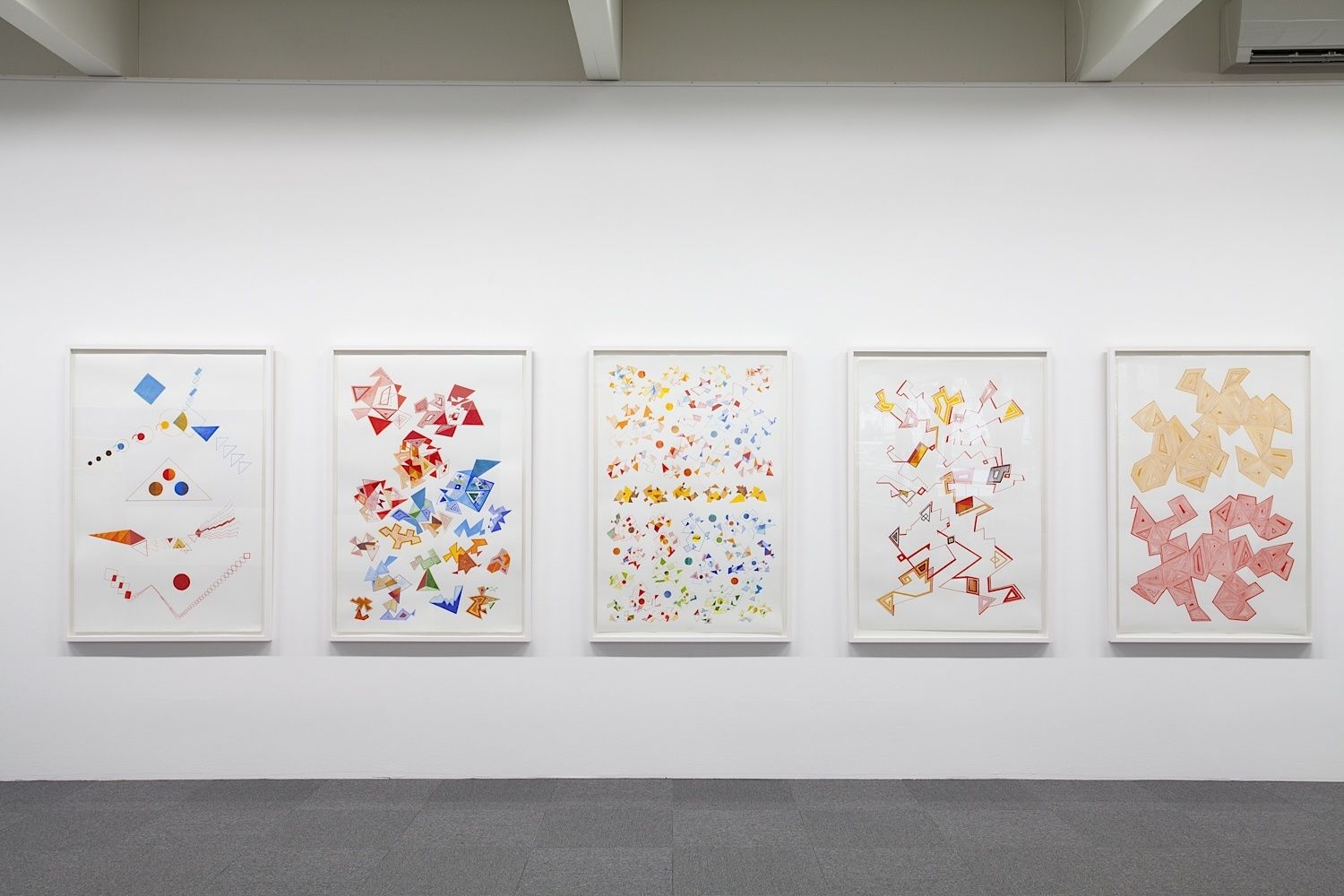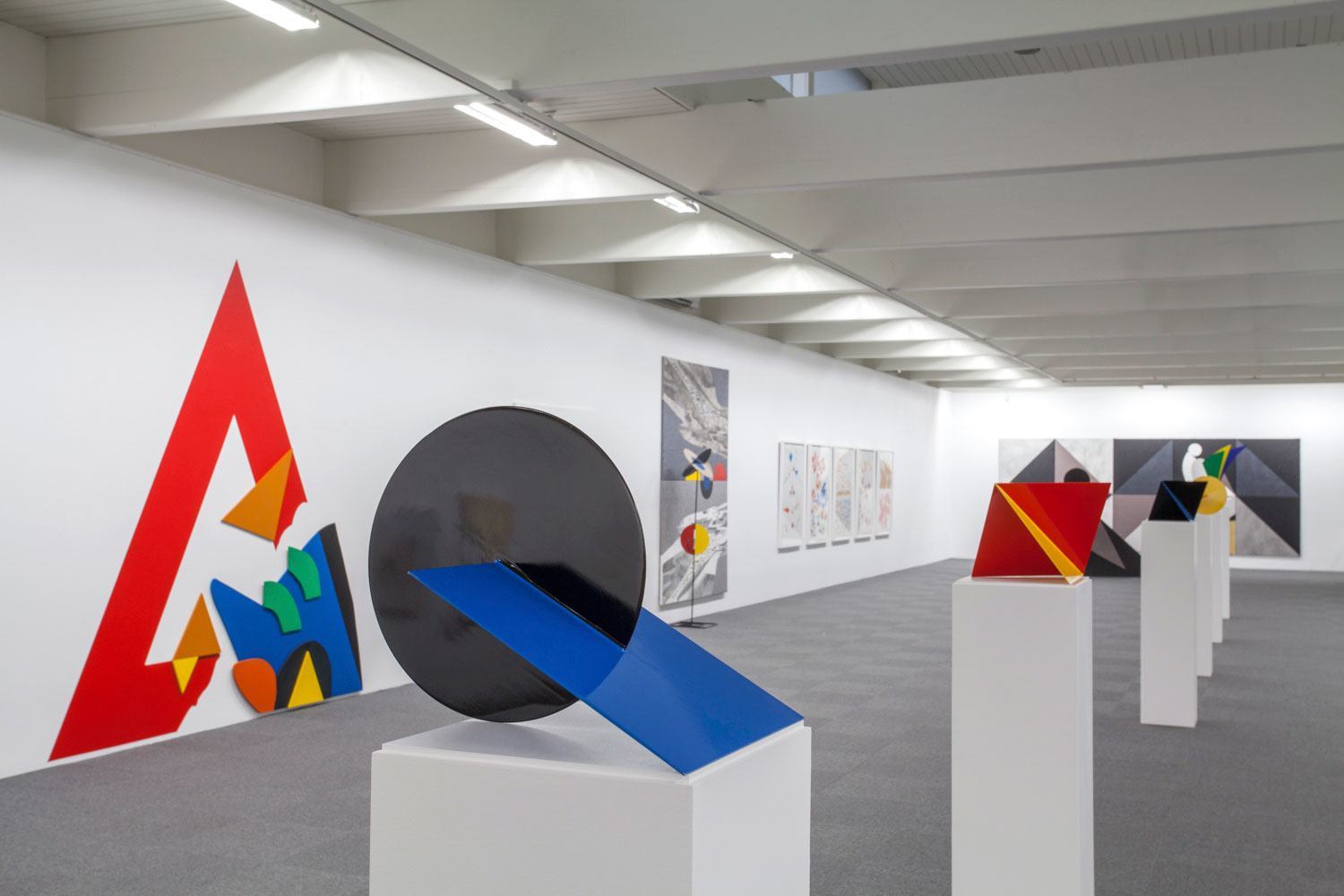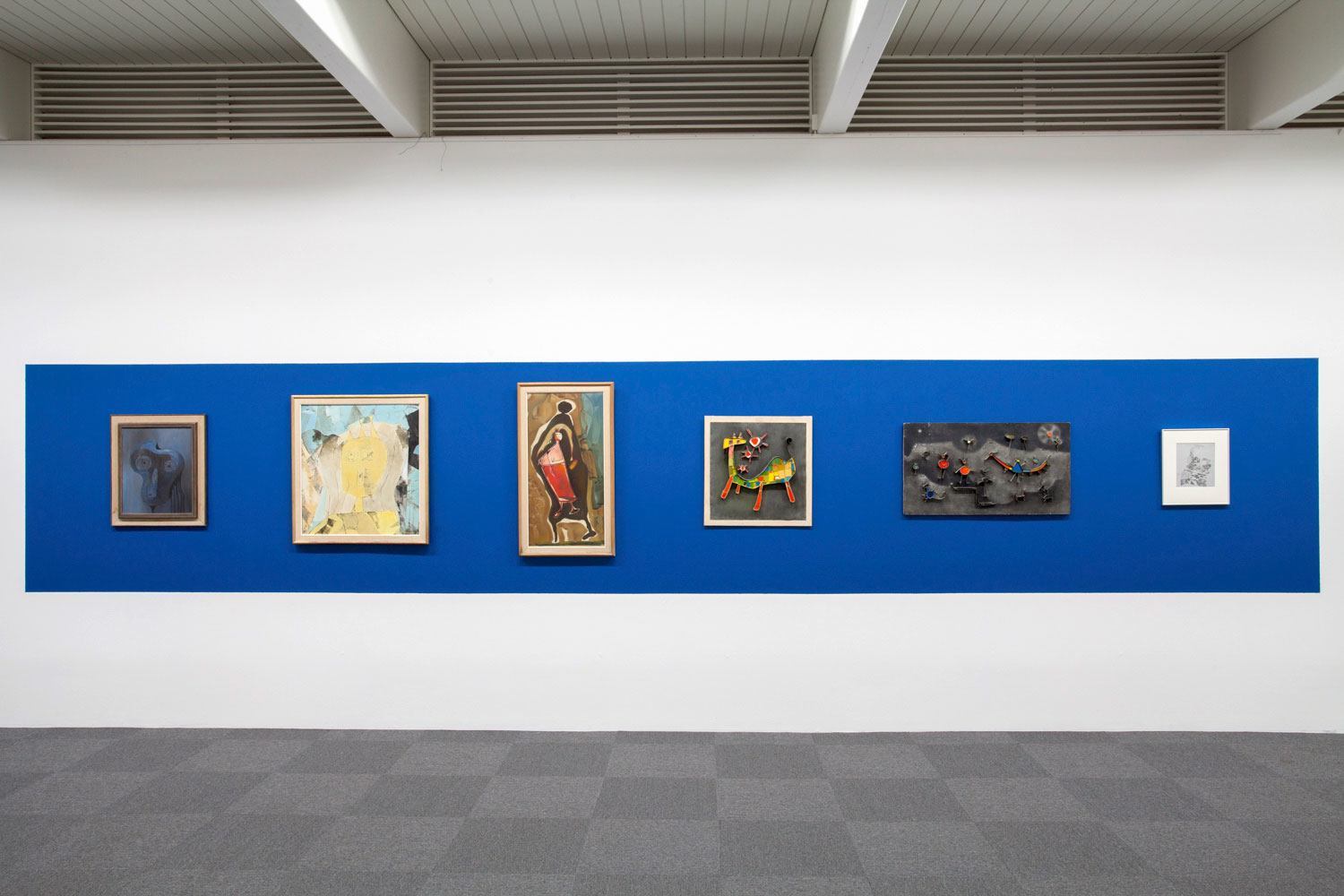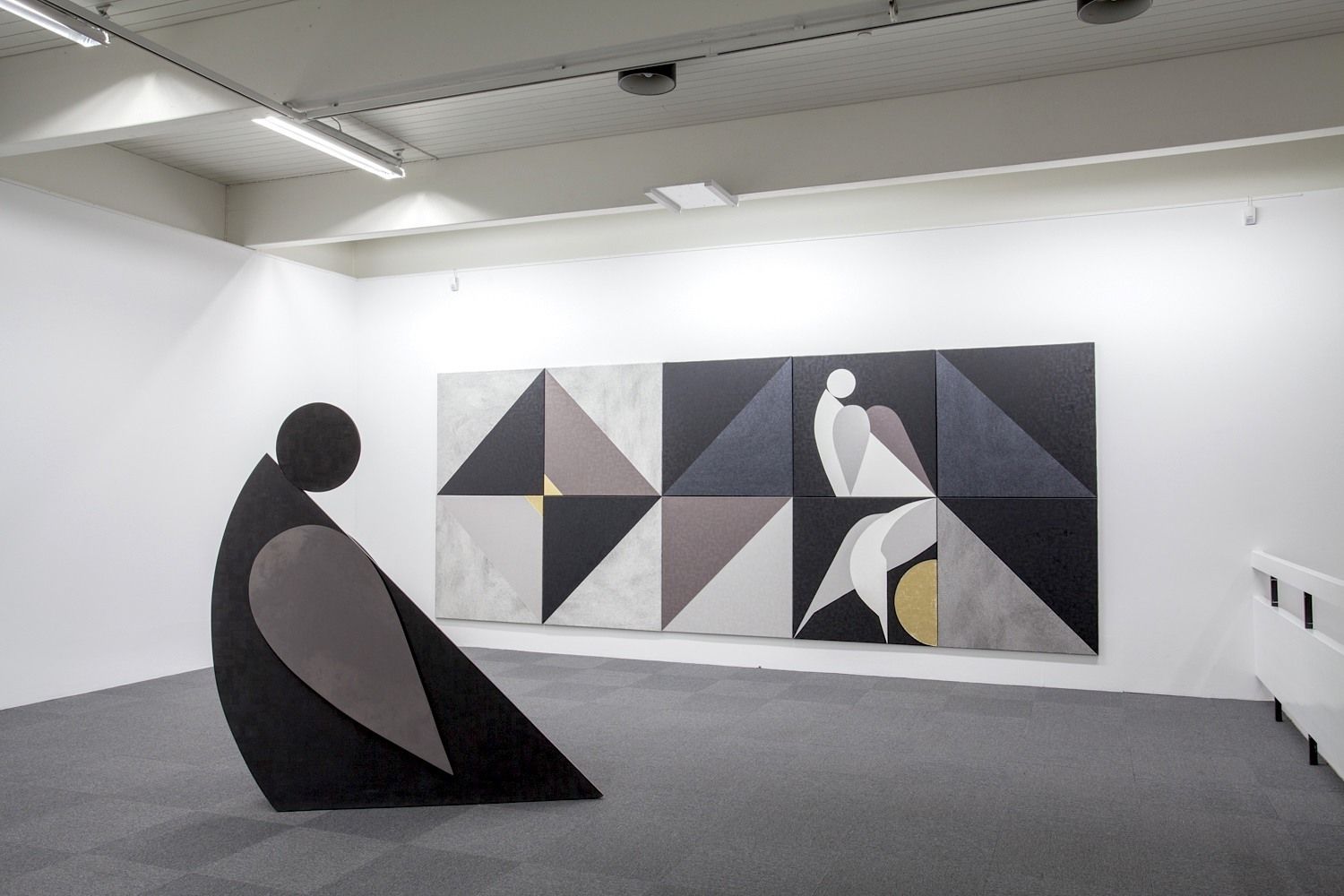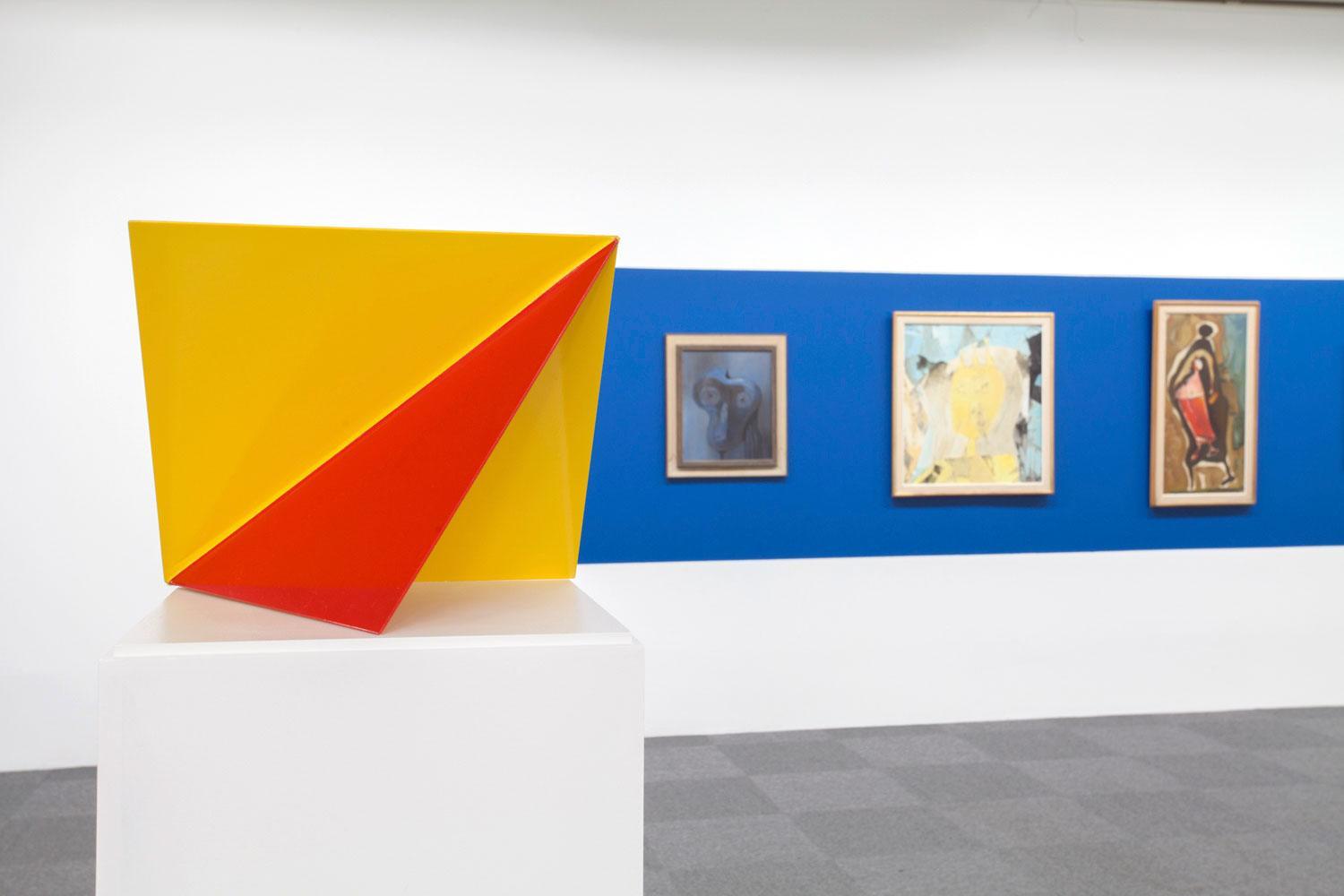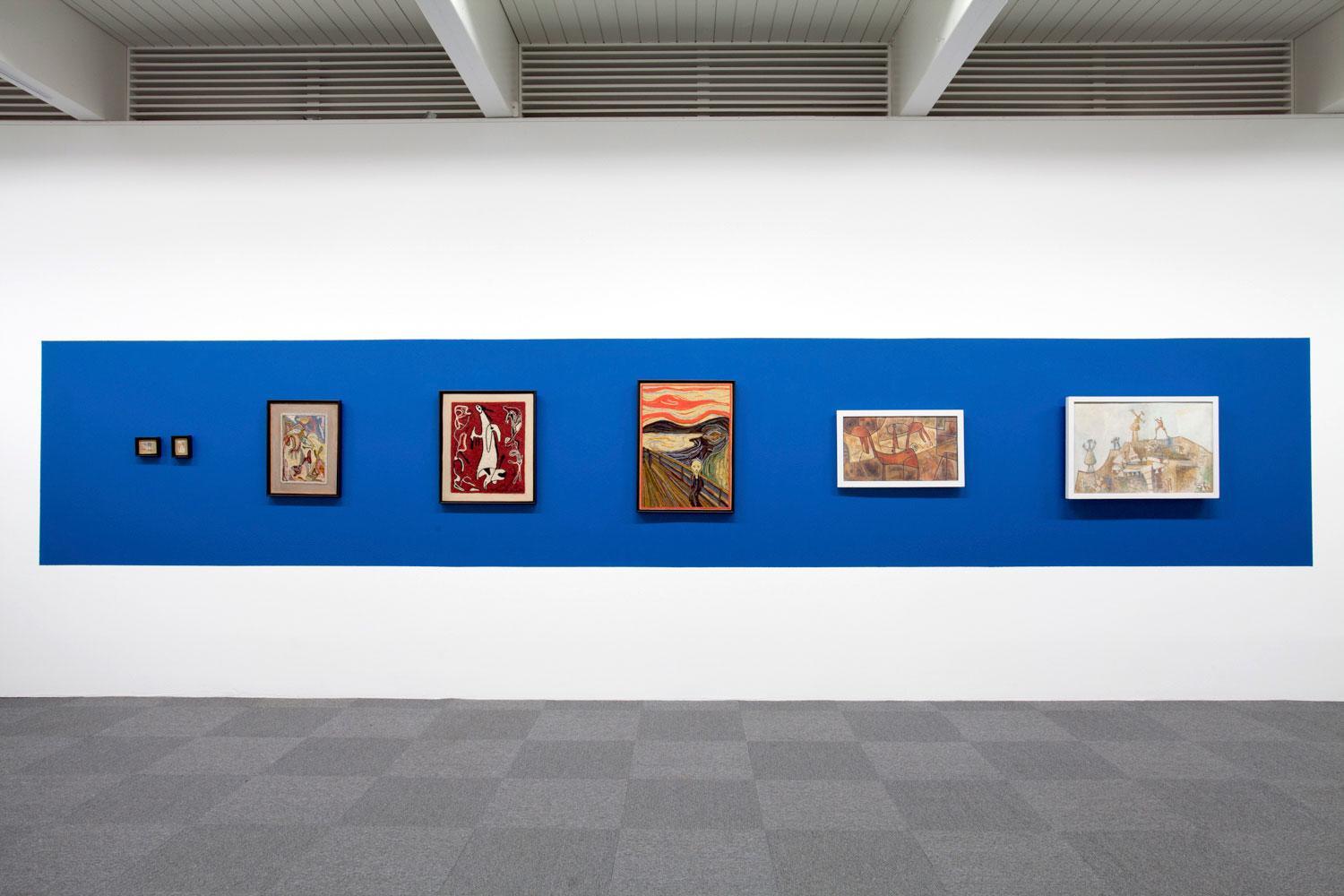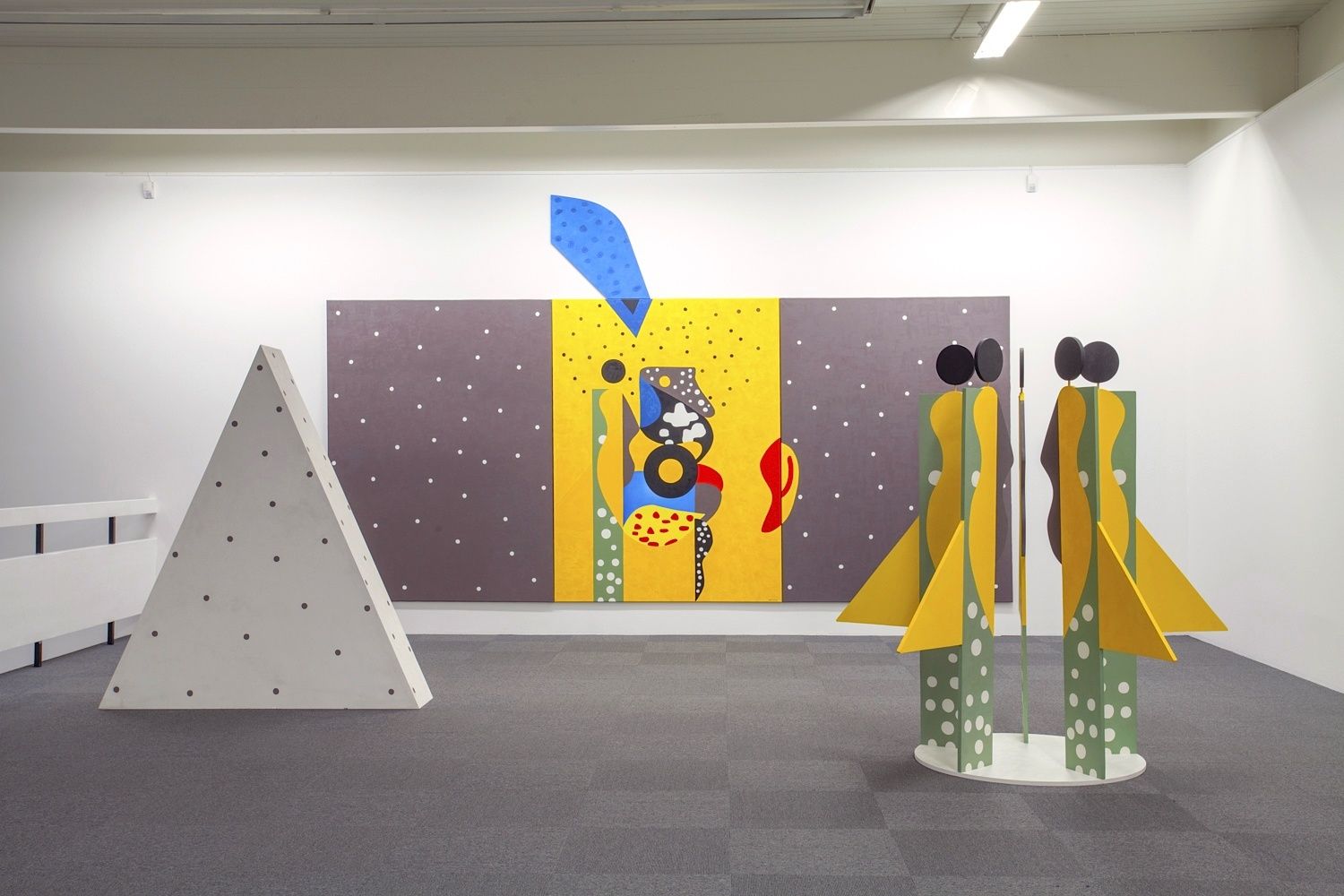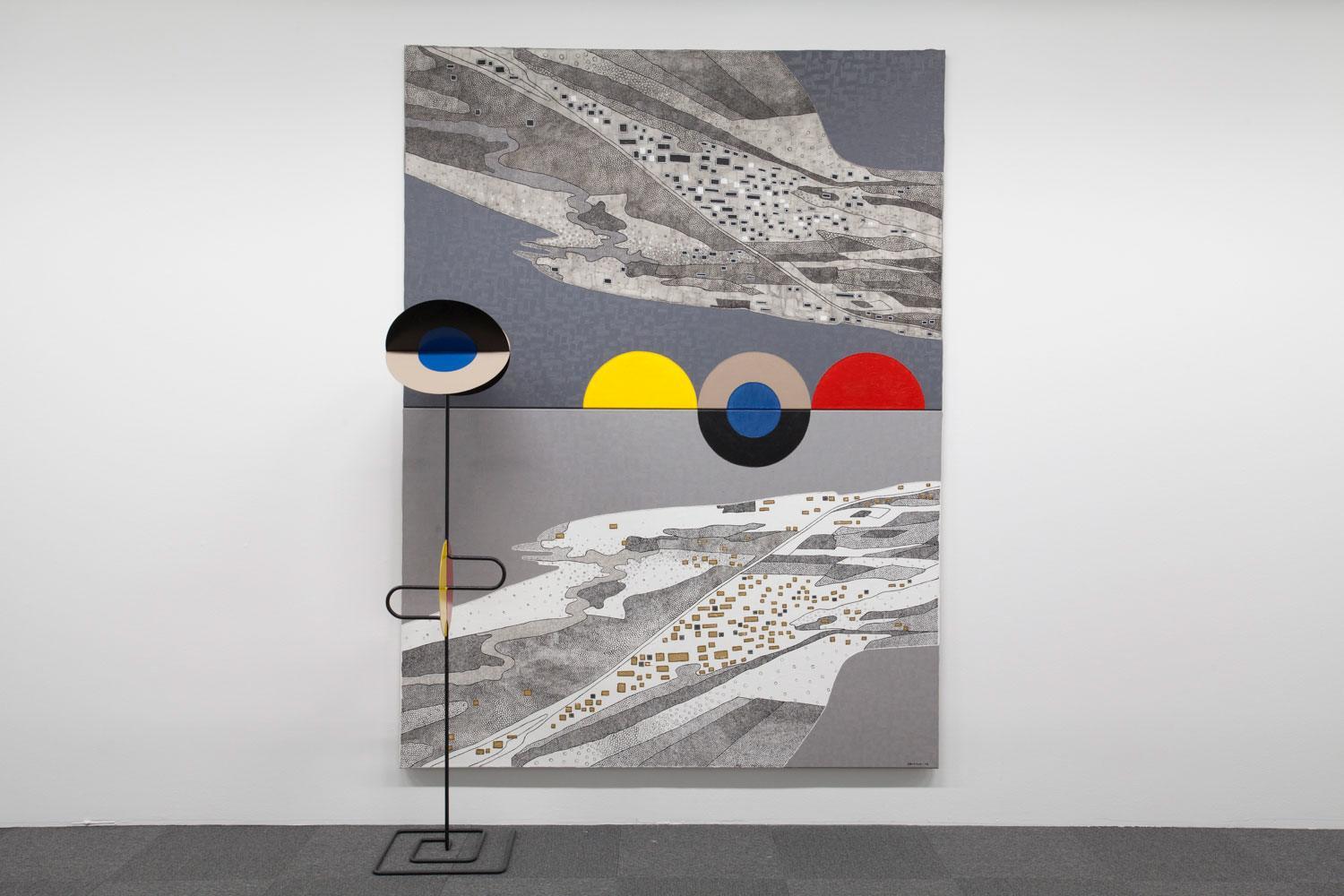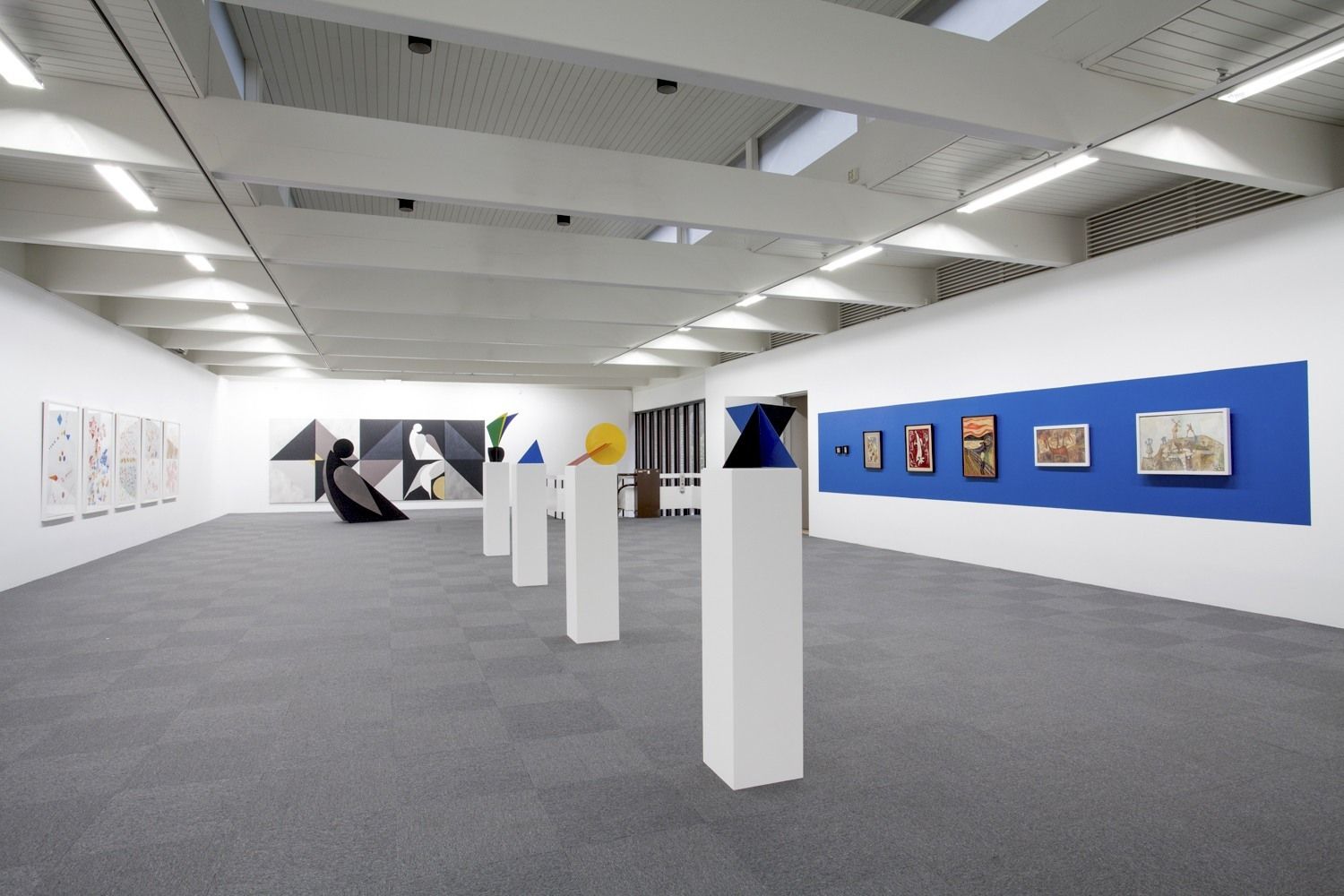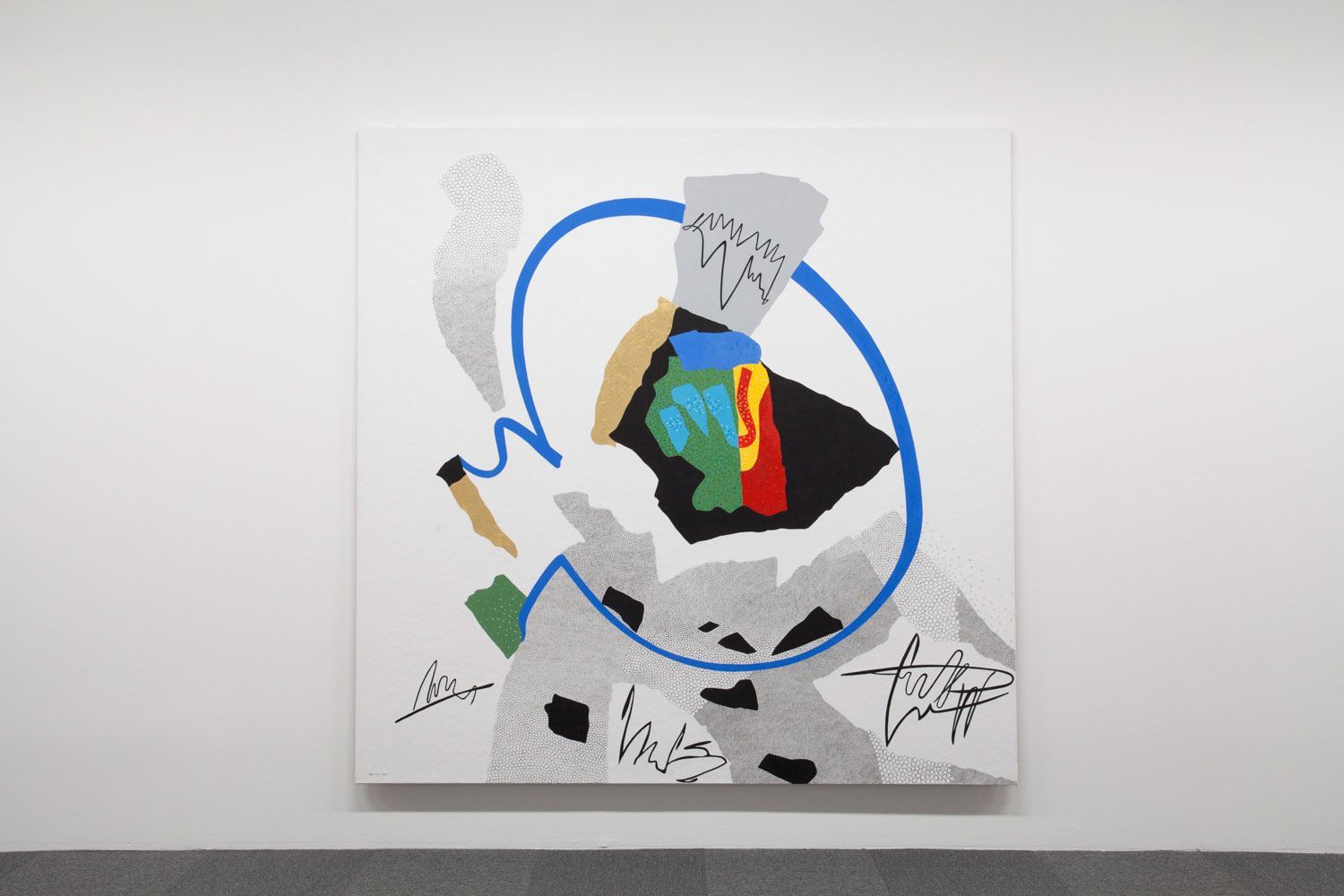You never know how it will be when an exhibition is coming up. I worked extensively with the schedule and wall sketches. Some changes have been made along the way, but it came out the way I had planned it. The blue walls, for example, with the oldest works, I had thought about for a long time. I was 16 when I made the oldest pictures, before I attended craft school. The two yarn works were in my first exhibition in Skien, and you know they received a lot of attention. At the time, they wrote about the exhibition in Dagbladet [Norwegian newspaper]. I've never seen anyone else do similar work with yarn. Yarn was what I had at hand at the time. I also used Huntonit boards and wallpaper paste. You know, they have lasted all these years. All the artworks on the blue wall are from before and during my time at the art academy, even the metal works. It was very "in" at the time, around 1964, to use metal in commissioned work. I have also used glass mosaics for commissions. At the headquarters of the Rogaland County Municipality, I've created several glass mosaic decorations on the walls on all floors. I really like working with glass and mosaic, and I wanted to bring some of these works into this exhibition as well, but there was not enough space. These brick works here on the blue wall are frescoes from 1961 and 1962. At the art academy there were only two of us students in the fresco class. It was cancelled after we graduated, which was a pity because I really thought frescos were very exciting to work on. At that time it was life painting that dominated the teaching at the academy, and the only break from this was the fresco class where you could paint whatever you wanted, be creative.


